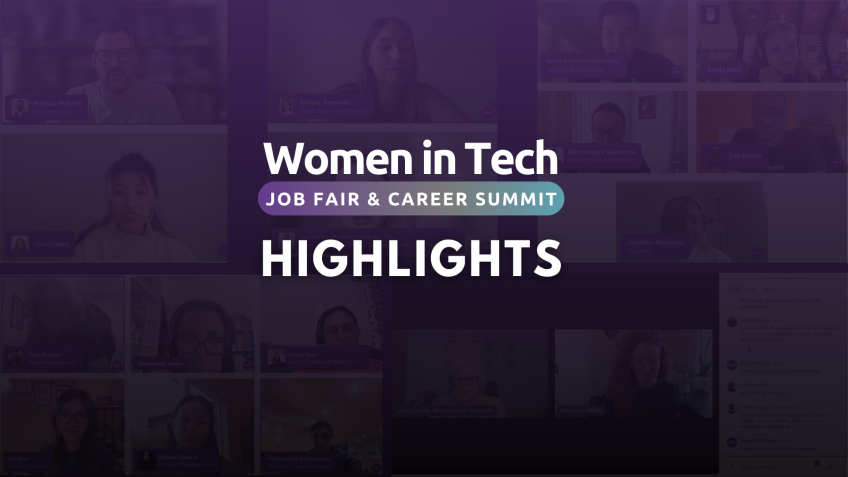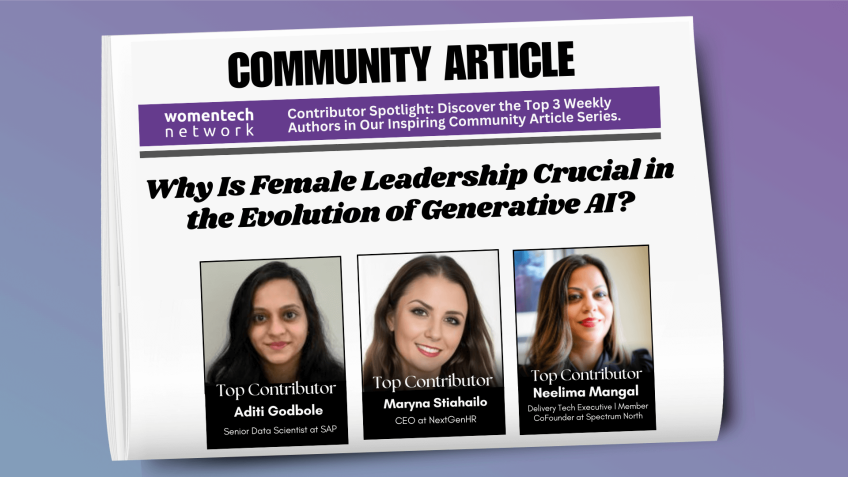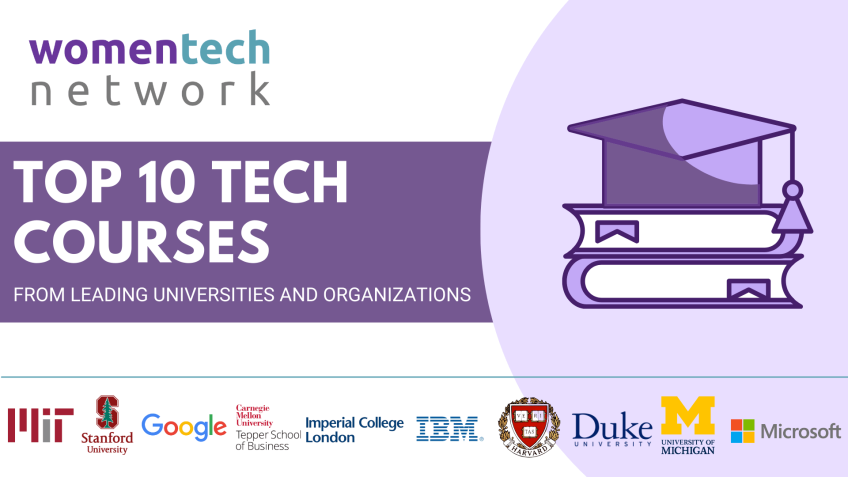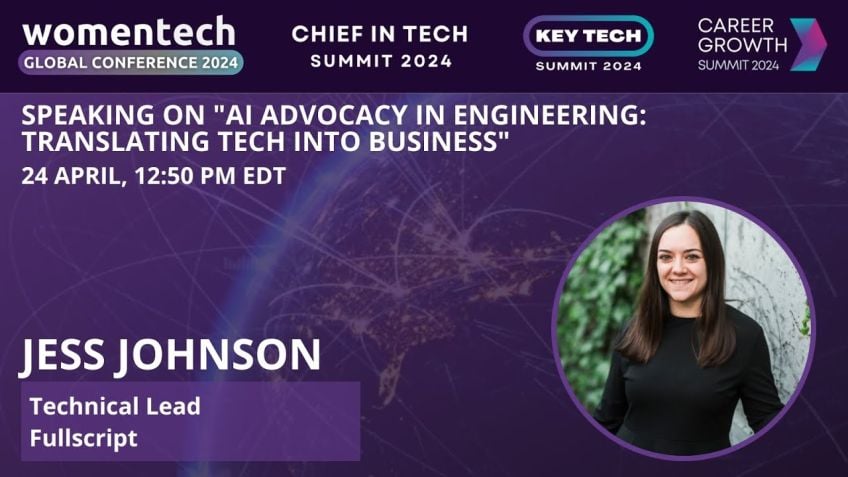Leadership in the Era of AI: A Roadmap for Responsible Innovation and Governance
Leadership In The Era of AI: Cantilevering Growth with Prudent Governance & Risk Avoidance
Today we delve into the fascinating era of Artificial Intelligence with an exclusive peak into the significant role played by leadership in leveraging AI advancements for organizational benefit. Larinda Dobbs, Chief Partner Strategy Officer at SS&C Blue Prism, reveals the organization's innovative approach in helping companies achieve holistic growth - by providing the tools imperative for establishing governance and mitigating risk while scaling GenAI implementations.
The GenAI Hype Cycle
As with any developing technology, GenAI has journeyed through a hype cycle. Much like RPA, where SS&C Blue Prism forayed originally, GenAI is peaking yet again due to its integration within Intelligent Automation and RPA. Note-worthy are the common challenges faced by companies using GenAI - the complexities in data classification and verification, aspects of privacy and security, and the essentiality of control and governance.
Opportunities with GenAI
Despite the hurdles, businesses still pursue GenAI owing to the unique opportunities it brings - transforming customer journey & employee experience, streamlining knowledge management and simplifying software development and delivery. GenAI alleviates processes from human-specific limitations, thereby enhancing accuracy and efficiency.
GenAI & Intelligent Automation: The Perfect Partnership
Intelligent Automation becomes the perfect partner for GenAI owing to its three key contributions:
- Sourcing & Curation: Ensures sourcing the right data and tracking the same for future audits.
- Execution & Automation: Assists in the sharing of analyzed data, eliminating manual tasks and facilitating scalability.
- Orchestration & Governance: Streamlines operations combining business resources with digital capabilities.
Pioneering Use Cases
Through precise understanding of business issues and mapping them against the five common questions asked by customers, SS&C Blue Prism's GenAI has revolutionized several areas:
- Simplification : Enable easy analysis by refining complex processes and summarizing the content.
- Classification: Fine-tune decision-making by infusing more context into the process.
- Generation:Ensure rich outputs using text, image, video, or data, thereby expanding decision-making capabilities.
- Verification: Guarantee the authenticity of the sourced data, spotting anomalies and confirming accuracy.
- Analysis: Make recommendations for the next business steps based on trend appraisal.
These principles have been effectively used in handling varied processes like equity research, unstructured document processing, complaints handling, refund processing, and reporting adverse events. Instead of ignoring the risks associated with GenAI, it is integral that businesses embrace these risks, while thinking big, starting small, and driving for scale and competitiveness.
.
Despite the challenges faced by technical difficulties, we hope this represents a useful guide for you to benefit from the valuable insights of Larinda Dobbs.
Video Transcription
Hello, everyone. My name is Linda Dobbs, and I'm the chief partner strategy officer at SS And C Blue Prism.We're here today to talk about leadership in the era of AI. And I'm really excited to chat with you a bit about the way we've been able to help companies see a growth in their AI group of values by giving them the tools they need to establish governance and avoid risk as they scale their genai implementation. One of the hallmarks of SSNC Blue Prism is we have a strong go to market partner strategy and our ecosystem of partners have done a tremendous amount of proof of values with our software, with their customers, And now what we're starting to see is by establishing governance around those proof of values these companies are able to scale.
So I'm gonna start off with the Genai hype scale. Every technology we know has gone through the hype cycle. RPA where we grew up absolutely went through this hype cycle. And we're probably on the downside of that hype cycle now. Yet new technologies are working with intelligent automation with RPA to bring it back up to the top. So it's really important for us to be able to take the capabilities that we have and wrap them around the many technologies that both our partners and our customers are using in the genai space. As we work with customers, What we hear is unlike a lot of technologies that have come into the market and gotten very exciting in the beginning. Genai went through a real change, and you can talk to McKinsey. You can talk to Baine. You can talk to any of the analysts.
And they'll show you how this came about through time. Best thing. It's going to do great things for companies that might take over lots of jobs, which always concerns people. And then about 6 months into it, We started to see articles that would talk about the risks, the uncertainty, the clear difficulty that companies were having and trying to determine how to get the benefits out of their genai applications. And what were these risks? Things like data complexity. If you don't have your data clean, it's really hard. To then leverage that data to make informed decisions. And that's what Jenai is trying to do. Right? It's trying to make informed decisions for businesses So they can be more productive and more competitive in the way they deliver their services or make their decisions more importantly.
Privacy and security came up a lot because if we can't protect the information that we are governing then companies can't use the technologies to make decisions based on that information So privacy security, especially for a company like SS And C, who does a lot of business in the financial services and health care sector, was top of mind for our customers.
Data accuracy. There's complex data making it clean, but is it the right data? Is it the right data to be basing your decisions on? And I've done a lot of talks about, the people that are actually starting to build these algorithms, build the large language models that are being used in genai. And do they have people that are really thinking broadly enough that represent the set of customers or represent the markets that the enterprise is serving. That's something that's going to come into play a lot. As you look at both the type of data and the accuracy of the data that companies are using in their genai applications. And then finally, and most importantly, control and governance.
If you make decisions and make recommendations and base your business, on new applications like Genai, how do you make sure that when someone comes back and asks you the question? Why did you make that decision? What did you do in this case versus a different case? You can actually answer those questions. And again, back to the businesses that SSNC focuses on, absolute number of one concern, whether it be in newer technologies like AIGEN AI, or it be in the way we run our businesses today. So controlling governance has been a key to making sure that any automation that you're using, any decisioning that you're using really can be audited, and you can ensure you can explain how, when, and why you came to certain decisions. Yet, we know there's a lot of risk. But there's a reason that we're still pursuing, that we're still going forward to try to get the best value out of Genai. And what is that? It's the opportunity.
Absolute key opportunity that customers can find in driving a differentiated business outcome and doing it in a way that lets them take advantage of all that accurate data. And
Hello, Linda. Yes? This is, from home and tech network sorry to interrupt you. I just see that in the chat, we have complaints that people are not able to see our slides changing. So have you been changing your slide? Because we are not able to see
them. Okay. Let me try do it in a diff different way. I'll try to share just my total screen. Thank you for letting me know.
It's okay. So sorry to interrupt you like this. It's just that I know you're not able to see the chat while you're presenting it. Thank you so much. I'll leave you to it.
Just waiting for the share to come back up. And I will for the folks around the a call, I will go back and just walk you through those. Alright. I'm gonna try to share screen and see if that helps. Can somebody let me know if that's helping?
So far, we still cannot delete, your screen being shared.
Okay. I don't know why. I'm sorry. I'm using your share screen capability. Let me try it one more time. It's just really slow. Oh my gosh. Alright. Maybe I'll just have to do it without the slide that apologize.
Yeah. No worries. It happens from time to time. I see people are leaving some really, injured in comments, and everyone really enjoys your session. So, yeah, please proceed, and then we can just take some questions at the end of the session.
Okay. Sorry about that. I'll keep trying as I as I talk. Okay. So so where was that? So as we look at the The hype cycle as we talked about, as when we start to really understand the opportunities that Genai offers, that's where start to get very interested in these different types of opportunities. 1st and foremost, customer employee experience is the number one. Companies really wanna drive their customer experience to be improved, to be better. And a way to do that is to introduce all of the value, whether it be content creation that you can pull from genai, whether it be digital assistance, which we see all over the place, virtual agents, in the contact center and any sort of service, systems that people are using.
The these are the places where now it's not just about being able to communicate like we did with natural language as an example, it's being able to really understand the context of what the customer is looking for. And use that context to bring them information that drives value to help them make the decisions they need to make to drive a difference outcome for their customers. Opportunity all the customers we talk to in the genai space. Secondly, is knowledge management If you look at the kinds of work that people do day to day, and I'll give you some real examples, in SSNC, our own business, tremendous amount of reporting has to go on, but those reports have to be checked and double checked, right, because when you're dealing with financial transactions, you have to make sure that those transactions are accurate.
And you think of all the people that have to create that report. Check that the accuracy of the report. Check where the data came for that report. Make sure that if they do it twice, it works the same way, right, in financial transactions, that's absolutely imperative. And now when the world of AI and genai, I don't have to do all that information checking myself. I can use the algorithm so kind of actually trust the algorithms in many cases to do it better than a human ever could. Another area that we see is document creation. If you look at the kind of information that, companies have to put out, whether it's answering RFI's, or it's putting out your annual report All that information is sourced from other documents that already exist in the business.
And if I can use a repetitive large language model to go find the information that I need as I create those documents over and over again. Now I can be a lot more effective in the way I'm doing that. And then we look at the 3rd category, which is not as near and dear to our heart at, SS and C, but software deliver development and delivery. You read about it all the time. Will genai replace the need to have coders in the RPA space, right, in our space, the space that we work in. It may, but there's a lot of intelligence that goes along with that, and we can focus our human resources more on the intelligence side. Versus the repetitive side of creating that code. So it isn't something we do as much of, but it is absolutely one of the top three areas.
That we see customers investing in the genai space. Now this next one's gonna be really a little hard for me to talk through without being able to share the slide with you. So I'm gonna do my best. 1st and foremost, then why intelligent automation for Genai? Why is it the perfect partner? And as we look at the elements of intelligent automation and specifically what we call the digital worker. It really helps in 3 important key areas. And they relate back to those risks and the opportunities that sure on your page, if you don't mind, but sourcing and curation. Back to, how do I source the data how do I ensure it's the right data and how do I ensure it's accurate data?
That's where a digital worker or an intelligent automation worker can actually go into those back end systems where most of that data resides and ensure that not only is it sourcing and curating the right data, but it's tracking as it goes. And this gets to the point of auditing. When you use data to make decisions, you have to make sure you can explain how you did that, why you chose the data you did, what decision you made. So sourcing and creation is the first way intelligent automation partners with Genai to be effective and enables customers to scale. On the back end or if you think of the right side, it's execution and automation. Once I make a decision, once I use Genai to come up with a recommendation, then I have to share that information in some way.
I have to either send something to a customer. I have to share it across my business. I have to populate back end systems whatever it is I need to do. If I had to do that manually, I would lose the value of scale that the Genai application can deliver If I can automate that with digital workers, now I can scale. So we solve 2 problems 1st and foremost, how do we get the right information and how do we ensure we can audit it. And then once we know we have it, we scale. And that's why intelligent automation is the perfect partner for Genai. The third reason is orchestration and governance. An orchestration is really looking at the different type of assets that you have in the business. It's your processes, your people, and your digital capabilities.
So the orchestration makes sure that if I do need a human to check an answer or add value into a process. I pull them in at the right time, and then I release them and let them go. And let the digital process. The government is actively audit, making sure that you can always track back to the steps you took, the data you leveraged, and then the execution you made based on that. So those are the 3 elements, sourcing and curation, orchestration, and governance in the middle, execution and automation to scale. And that's why we say intelligent automation is the absolute perfect partner for genai. Now there's 5 use cases that we focus on a lot with customers. And the question we ask to customers is what is it that you currently can't do? With the intelligent automation, the business applications that you have today. What's missing?
And these are the five areas that we hear a lot. 1st and foremost, simplification. How do I make it easy? Because processes are often complex. And if I can't simplify the information, that I'm getting to either put into that process or getting out of it, it makes it hard to use. So summarizing content to the point that you can use it in a really constructive way by simplifying it. Number 1. 2nd is classifying. And classifying could be by topic, could could be by sentiment, and this is where that context comes in. So if you have context to your decision making and and Jenai enables us to just infuse decision making with context. Now you'll make a better decision. So classification is second. The generation piece, AI in and of itself was very good at specific tasks. Right?
It would go it would do due diligence, then it would come back and say execute this task based on this one decision. But it really couldn't imagine the ability to use text with image or text with video or with audio. The data visualization capabilities enable now the generation of decisions across all modes of communication and all modes of input. So now we've just made our capabilities so much richer in the outputs and the decisions that we can execute against. Verification is back to making sure that we have the right data. Is the data the same as what we would see if we looked at other sources? And again, when you're using 3rd party data and you're trying to make a decision across multiple sources of 3rd party data, This is when verification comes into play.
And again, it's enabling you to get more information from a broader set of sources, bring it back and then make your recommendation as to what you wanna do. And then finally, analysis, making sure you're using trends and providing the right recommendations for the next best steps that a customer can take in their business. So 5, and I'll repeat them because you can't see them simplification, classification, generation, verification, analysis, 5 very general use cases, but in customers, businesses, you constantly hear about them. As they explain more to you about their true business issues. So what we've done is we've taken those 5 and we've put them to real use cases. And some of the ones that we'll have available to you after the session you can go into sscblueprism.com. You can find them on YouTube, things like equity research. Unstructured document processing, complaints handling, refund processing, adverse events.
And I'll walk through a little bit of detail on each of these so I can give you guys a good sense of the value of each. 1st and foremost, equity research, you can imagine that is poor. To what we do every day and our customers do SSNC. So tremendous amount of information stocks, bonds, etcetera, out in the the field. Why will one go up? Why will one go down? You can imagine pulling together all different type of assets and then making your decisions on investments. Back to things like 401 k report, back to, trading data. All that information can be pulled in, analyzed very quickly and actions taken on it in whatever format that information happens to exist. Unstructured document processing, we reduce a lot with companies and things like legal doc documents.
There's often the need to read through, quote, read through, your legal documents and just find certain pieces of information and then bring that together and make decisions or take actions based on it. And you can imagine how difficult that is if you've ever tried to do it because legal documents are always in some sort of PDF written format. And it's they're not always written in the same way and the same structure. So you've gotta go in and find the information you're looking for just to get the process started. Complaints handling. Lots of issues are coming into customers every day. How do they make sure that they're dealing with the most important complaints? How do they make sure the customer's getting an immediate response and one that really talks to the issue that they have.
And that's been a lot of the issue in the past about the way complaints were handled. You know, thank you very much for submitting your complaint. And it kind of left you the user hanging right there. Now the detail of your complaint and even potential solutions to that can be shared leveraging more advanced genai applications. Refund processing That was a huge one for us during COVID. All the airlines, you know, just start there had to immediately overnight be able to deal with refunds at enormous scale. So some of these things I'm talking about are more on the curation of data.
Some are the analyzing of the data and then some are the execution, refund processing really falls in that execution category. And then finally, adverse events. If you're at all familiar with the pharma business, They got complaints constantly about something happened to me when I took this pill or took this medication or took this over the counter drug. And they have to figure out which ones are just one offs, which ones are happening repeatedly, which ones might only happen once or twice, but they have huge impact, you know, very bad impact on on the customer. Which ones do they pay attention to? And so adverse events has been in the pharma area, a real use case that we've been able to make a difference with our customers. So the end of my talk is really about how to think about the next step in bringing the value or the opportunity of Genai into your business, understanding the risks, not ignoring them.
And I think that in the very early days when we heard all the, you know, the big root talk about Genai, We were ignoring the risks. Then the risks became more important than the opportunity. Now we wanna bring that together. So we want customers to think big. What are the kinds of problems that you could not solve, cannot solve with the existing technologies that you have? How do you start now in really understanding the value and the differentiation that you can bring to the business And then how do you move fast, for sure, but do it ensuring that you have the governance around the application around the business model, around the process that's going to make it really work your business drive to franchise more competitive than what you do.
So that's what I wanted to share today. I apologize that the slides would not share, but, hopefully, the rest of the story was was useful for you guys. And I look forward to speaking to you again soon. Thanks so much.





